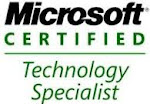While applying the updates in SharePoint I have a lot of
confusion every time in Cumulative Updates, Service Packs and Public updates. By going through articles in TechNet and some of blog posts, i have found the following differentiation among them.
Service Pack:
It’s an update or combination of previous updates helps to
make our product more reliable. It includes new fixes, functionality additions
and all fixed that released previously (means Previous Service packs, Cumulative
updates). That means if MS people released a service pack recently means that
contains all the list of features up to date.
Service packs will not be multilingual. We have to download
and install separate service packs for each installed language. We must install
service packs for specific product as soon as possible. Microsoft provides all
the latest fixes and updates in Service pack. There are no prerequisites for
Service pack installations because each service pack includes all the recent
updates from product release. Service Packs will not release frequently.
Cumulative Update (CU):
Cumulative update is collection of all the hot-fixes up to
date. Generally Office hot fixes are released for every two months in a
package. It includes fixes for all the issues collected from hot-fix accepted
criteria that related to customer impact or reproducible.
Cumulative update
also includes critical on-demand hot fixes and security updates. It includes all the previous cumulative updates and public
updates from previous service pack release. Cumulative updates are
multilingual. It includes fixes for all languages. To install CU in our
machine,, we have to install recent service pack related to that product (If
released).
Generally cumulative updates are not mandatory to install.
We can install them to fix any issue. While downloading CU itself we can see
the applicable scenarios in KB article page. There is lot of chances to affect
the system. So we have to check before installation or advised by Microsoft
people support to install. Cumulative updates releases frequently for a second
month like (Feb, April, June, Aug, Oct, Dec)
Public Update and Critical On Demand:
Public update includes product fixes that applicable to
large number of customers. Public update also applies for multilingual. To
install public update we have to install most recent service pack if released. Sometimes
Public Updates may have prerequisites for Cumulative updates also. Public Update includes security fixes and it
is recommended to install ASAP.
Critical On Demand will applicable for less number of
customers facing critical problem. It will applicable for a specific problem or
issue. COD is not multilingual. We have install COD’s on Microsoft people
recommendations only.






































